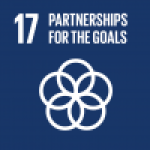Kathmandu, 7 September 2020 – A new report from the International Centre for Integrated Mountain Development (ICIMOD) and the United National Development Programme (UNDP) in Nepal has identified 47 potentially dangerous glacial lakes within the Koshi, Gandaki, and Karnali river basins of Nepal, the Tibet Autonomous Region of China, and India.
The glacial lakes identified are at risk of breaching, which would result in glacial lake outburst floods (GLOFs). GLOFs are a prominent water-induced hazard in Nepal and other mountainous countries in the Hindu Kush Himalaya, and occur when melting glaciers create reservoirs of water that can suddenly burst leading to floods downstream.
The inventory of glacial lakes and identification of potentially dangerous glacial lakes, released today, lists 25 glacial lakes in China, 21 in Nepal, and one in India, which need to be closely monitored to reduce the vulnerability of mountain people and settlements downstream in the three river basins. Of the 47 identified potentially dangerous glacial lakes, 42 are within the Koshi basin making it the river basin with the highest risk. The Gandaki and Karnali basins have three and two such lakes, respectively.
Records show that, on average, Nepal loses 333 lives and property worth over USD 17.24 million (NPR 2,099 million) each year to extreme climate events. Since 1977, Nepal has experienced 26 GLOF events of which 14 originated in the country. And, with the changing climate resulting in increasing rate of glacial melt, GLOF remains an ever-present threat for Nepal.
ICIMOD and its partners have been involved in preparing and updating databases of glacial lakes and the identification of potentially dangerous glacial lakes in the Hindu Kush Himalaya region since the early 2000s. This report builds on a comprehensive study undertaken by ICIMOD in 2011.
In 2016, in partnership with the Global Environment Facility and UNDP, the Government of Nepal successfully lowered the water levels in Imja Tsho and installed community-based early warning and response systems as a mitigative climate action.
Periodically updated and standardized glacial lake inventories like this one provide crucial information for evidence-based planning of tailored mitigation measures to address future GLOF risks.
The full report is available for download at: ICIMOD and UNDP Nepal website.
About ICIMOD
The International Centre for Integrated Mountain Development (ICIMOD) is a regional intergovernmental learning and knowledge sharing centre serving the eight regional member countries of the Hindu Kush Himalaya – Afghanistan, Bangladesh, Bhutan, China, India, Myanmar, Nepal, and Pakistan – and based in Kathmandu, Nepal.
About UNDP
United Nation Development Program (UNDP), as the largest implementer of climate action in the UN system, has been assisting countries like Nepal to deliver on their commitments to international agreements and provide technical support to achieve their climate priorities. UNDP is on the ground in some 170 countries and territories, working with them on their own solutions to global and national development challenges.
This article first appeared on UNDP Nepal's website here.

For more information:
ICIMOD: Maxim Shrestha: maxim.shrestha@icimod.org | Sudan Bikash Maharjan: sudan.maharjan@icimod.org | Arun Shrestha: arun.shrestha@icimod.org
UNDP: Kamal Raj Sigdel: kamal.sigdel@undp.org | Deepak KC: deepak.kc@undp.org


